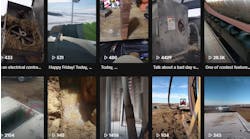Your company has an opening for a plant electrical engineer in a desirable city. You would like to live there, and this also would be a promotion for you. Here’s the catch: You are one of three people being considered, and it’s a contest. The winner is the one with the most convincing proposal to solve a problem that’s been plaguing the plant for a few years.
Each candidate will get one escorted walk through the plant and the plant grounds to collect information. The proposal will be due one week later.
What’s the problem you are proposing to solve? After every lightning storm, the plant undergoes a rash of equipment failures. The plant has a lightning protection system on the roof that was “installed in full compliance with industry standards.”
What should you look at, and what should you recommend?
First, familiarize yourself with NFPA 780 and LPI-175 before your trip. Once there, inspect the lightning protection system from top to bottom, looking for any deviation from either standard. Also look for physical damage and corroded connections.
In addition, ask when the buried part of the system was last tested. It may have corroded so severely that it’s a high-impedance path.
Conversely, the failure cause could be unrelated to the lightning protection system, but judges in this contest have already made that the focus. Your findings should allow you figure out what needs attention. Your written recommendation should consist of three parts:
- A tightly written executive summary that avoids using jargon.
- Relevant technical information. Organize this in logical chunks and number each “data item.” In your summary, refer to specific evidence contained here by its number.
- A list of other possibilities.




